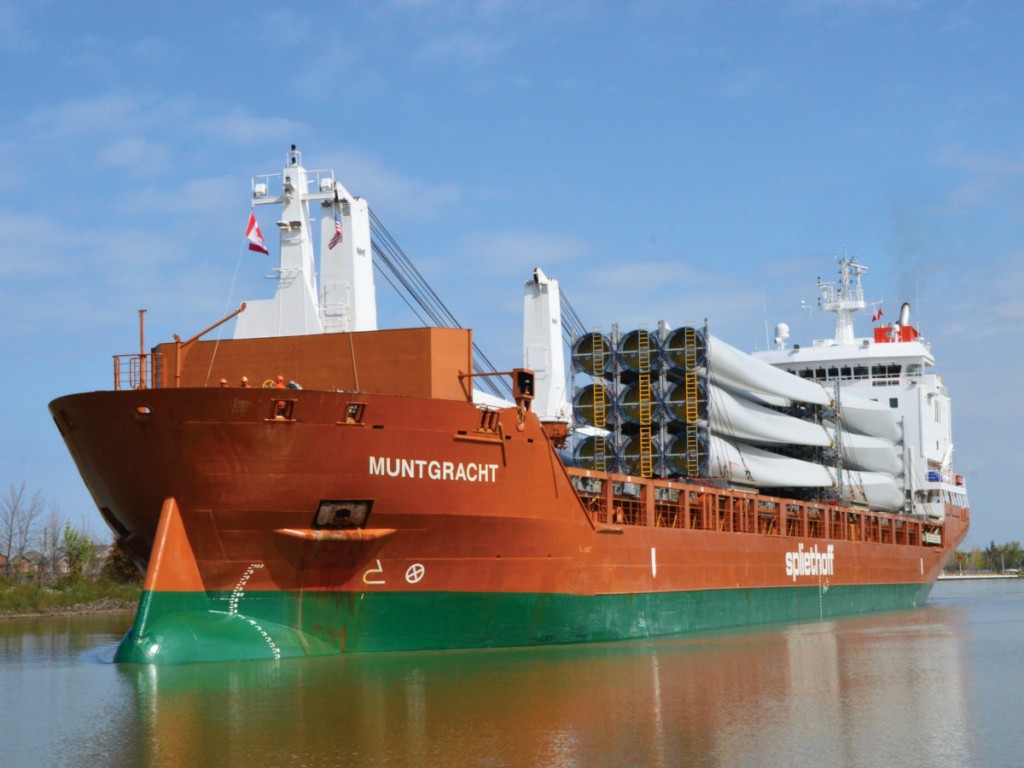Part 1: Windpower component shipments have boosted breakbulk totals for Canadian ports
Part 2: Positive Outlook on St. Lawrence Seaway
Part 3: Valleyfield’s Arctic Cargo Horizons
Part 4: Amherst Island wind energy project
Windpower component shipments have boosted breakbulk totals for Canadian ports.
The global breakbulk market has witnessed a surge in shipments of wind power components in recent years, a trend that has also gathered momentum in Canada. Transportation providers on both water and land have been engaged in shipping components manufactured notably in Europe and domestic sources. And there is no sign of weakening demand for the immediate future, although sometimes opposition surfaces from local residents impacted by a wind power project.

Indeed, Canada in 2018 continued to show strong and stable growth in this niche sector, reports the Canadian Wind Energy Association (CanWea). It finished the year with close to 13,000 megawatts of capacity, enough to power some 3.3 million homes or 6% of electricity demand. National installed capacity has doubled since 2012.
Robert Hornung, the Association’s president, asserts, “Each year, the wind energy industry provides more clean and low-cost electricity to Canadians and increases its contributions to a modern and reliable electricity grid. Wind is a success story across the country – helping to meet electricity demand in a way that is consistent with Canada’s climate ambitions and that benefits landowners, rural and indigenous communities, and the economy.”
Last year saw the completion of six projects that added 566 MW of new installed capacity, with Ontario and Quebec accounting for nearly 9,000 MW.
Canada is home to the world’s ninth largest wind generating fleet. There are today some 300 wind farms operating from coast to coast, comprising 6,600 turbines, including projects in two of the three northern territories. Among Canadian provinces, the large bulk of capacity is currently located in Ontario (40%), Quebec (30%) and Alberta (12%).
For 2019, CanWea anticipates 1,000 MW of new wind energy projects commissioned in Alberta, Ontario and Saskatchewan.



